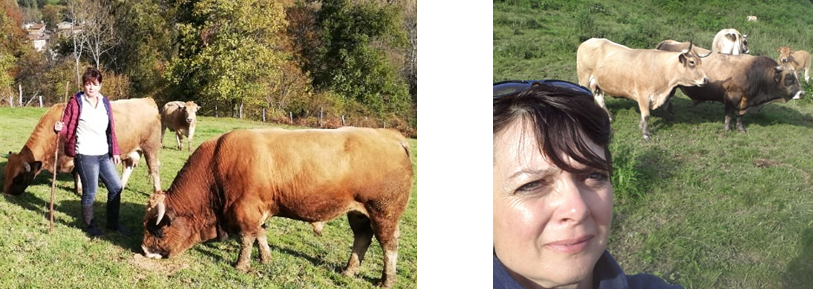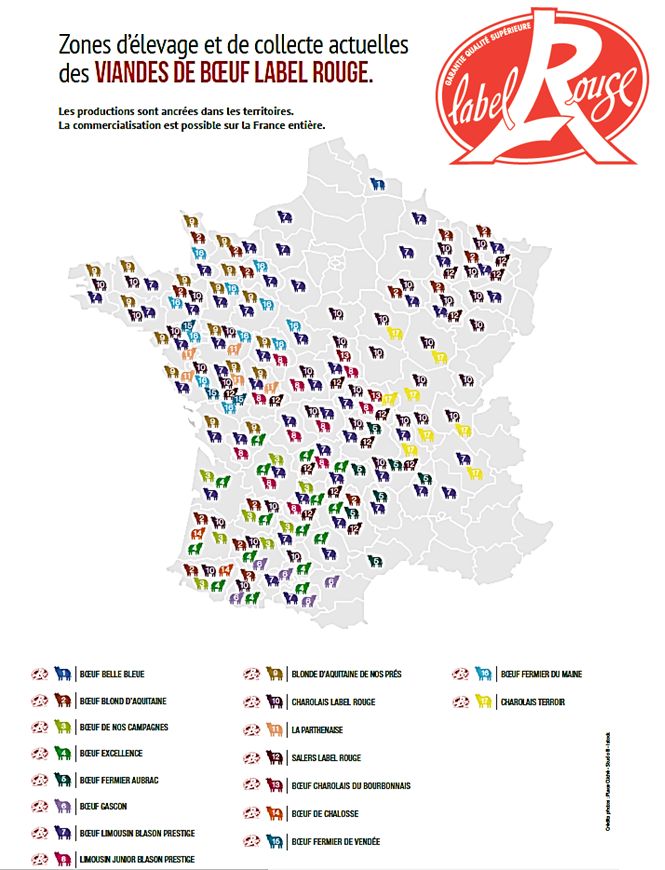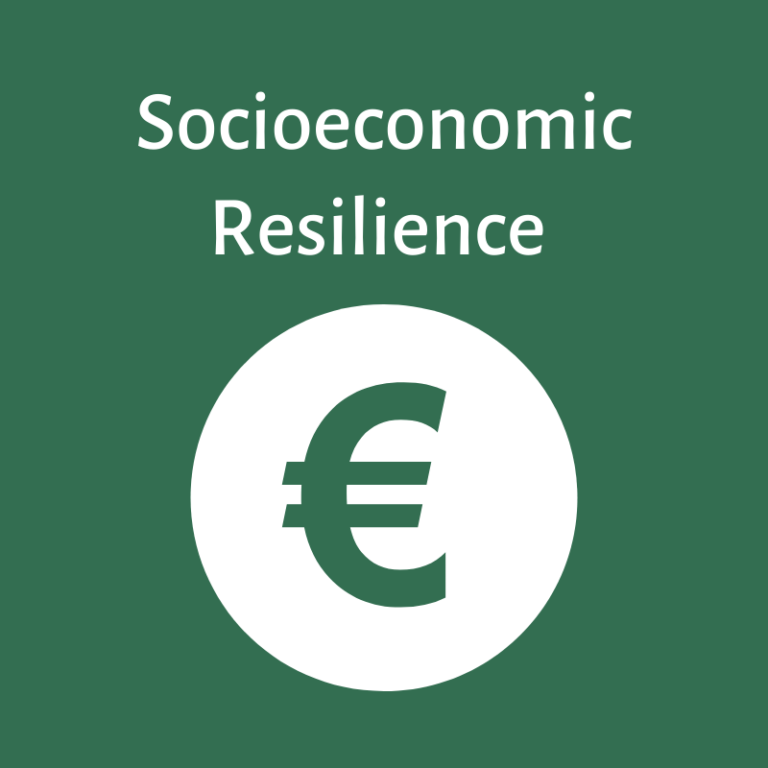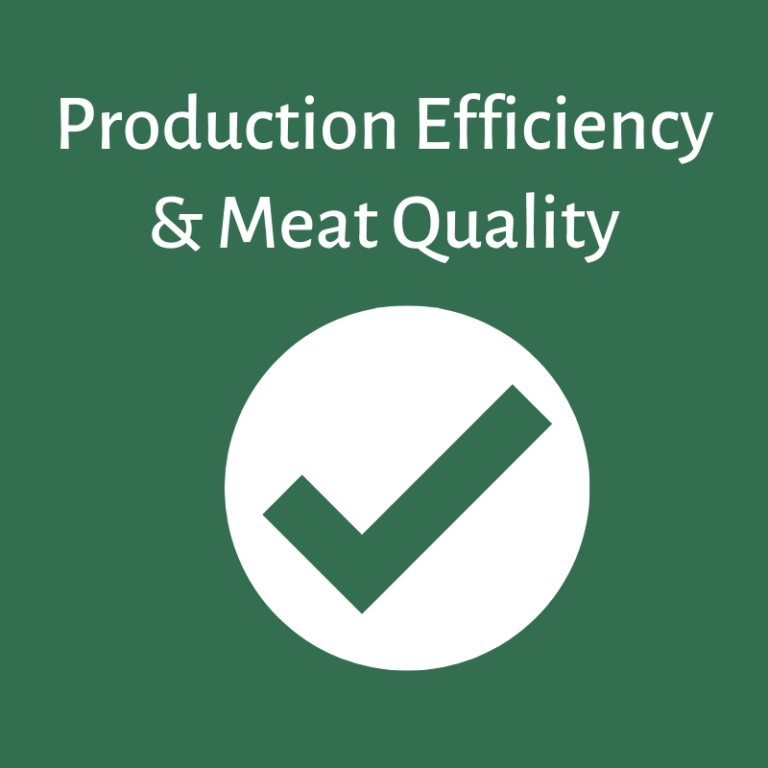
https://ec.europa.eu/eip/agriculture/en/find-connect/projects/bovine-beef-innovation-network-europe
Some consumers look for and pay for high-quality food products, including beef; some farmers are able to supply these premium products, obtaining some benefits in return. In France there is an official specification, Label Rouge, which is available to producers as long as they meet the established production criteria based on a qualification of the farm, which is done by a technician over half a day once a year. Label Rouge is a sign of the commitment of professionals from the meat industry, offering consumers superior sensory quality and ensuring responsible and sustainable production and fair remuneration for farmers.
The farm GAEC Philippe DELAIRE, located in Augerolles, Puy-de-Dôme (Auvergne), for example, adopted this qualification and specification system five years ago, wherein the associated data are checked and monitored over time. This farm has 100 suckler Aubrac cows and has finalised over 240 calves from several breeds: Limousin crosses, Montbéliards, Prim'Holstein, and Normans calves from dairy herds. For the farmer, Label Rouge represents recognition for a job well done and brings additional value for their work. For this farm, Label Rouge is also a solution to enhance the use of a natural asset (meadows).

To receive the Label Rouge specification, a breeder must meet common production conditions which guarantee a high-quality product and respect for the animals and the environment. These conditions relate to animal feeding, for example, such as a minimum grazing period of five months when the weather permits, providing high-quality hay and concentrate/cereals when necessary (only plant-based feed), feed autonomy (80% should be produced on the farm), avoiding genetically modified organisms and palm oil in the animals’ diet, and ensuring the right finishing of the animal in terms of the eating quality of the meat (the minimum fattening carcass level is 2). The breed types in use need to be authorised based on their adaptation to the region in which they are raised; depending on the regions and traditions, 17 different Label Rouge approaches are available, as can be seeing in the figure below. These 17 approaches are based both on common production conditions – the basic foundation – as well as specific conditions linked to the territory in which the process takes place (the addition of summer pastures, flax feed, etc.).

Localisation of the 17 Label Rouge beef in France
Antibiotic treatment is prohibited during the last four months of the animal’s life and anaesthesia/analgesia is required when dehorning or castrating. At all stages of its production and development, a Label Rouge product must meet the requirements defined in the specifications, as validated by the Institut national de l'origine et de la qualité (INAO) and approved by a ministerial order published in the Official Journal of the French Republic. Therefore, technicians approved by the INAO carry out an annual qualification of each farm, approving the label for one year. The other links in the sector are also qualified (slaughterhouses, cooperatives, and distributors) in order to ensure that other relevant conditions are also met, for example, the duration of meat ageing (10 days on-carcass or 13 days under vacuum). An external independent certifying agency controls the qualifications. As a result, a breeder may also have the certifying agency visit their farm to ensure compliance with this qualification (5% of random farms are seen each year by the certifying agency). The maintenance of the high eating quality over time is monitored by performing regular sensory analysis and organoleptic tests that compare Label Rouge products with the current product.
To the farmer who was interviewed, a main challenge in the implementation process was to set the right price of the product to cover the production costs. Today the valuation is only 20 cents higher than an animal sold in conventional systems. They would like a better valuation by price because of all the guarantees and the know-how that the Label Rouge offers to consumers. Other challenges were to be approved by the official farm visit and the discussion with the Producers’ Association to identify the market needs. The main value and benefit of adopting this system is its emphasis on the specific production methods to meet a ‘quality market’ in France.
Three lessons learnt that could be relevant for other practitioners wanting to implement this good practice:
1. Identify market needs.
2. Check your own farm’s potential.
3. Make sure the price will cover the production costs.
Label Rouge is an old certification recognised by many consumers in France; however, their extension in beef is less than for other food products, such as poultry. The current proportion of meat using the Label Rouge system is around 5%, and at the national level they are promoting this certification in order to increase it to 40% in the coming years. Furthermore, the French Label Rouge specification is open to products originating in other geographical regions (including outside the European Union).
Impact on:
 |
Higher costs related to achieving the specifications, but also higher returns to farmers |
 |
Label Rouge implies that requirements related to animal health and welfare are fulfilled, such as avoiding pain when dehorning or castrating |
 |
Ensures a high eating quality and other extrinsic attributes relevant to consumers |
 |
Care for the environment is also pursued by this label |
Source of information:
- Innovation submitted by the Network Manager from France: Marie Penn (FNB – Fédération Nationale Bovine)
- Websites about Label RougeBeef:
- Ellies-Oury et al. (2019). Meat consumption – What French consumers feel about the quality of beef? Italian Journal of Animal Science: 18:1.
Link to videos:
- Salers Label Rouge (in French): https://www.youtube.com/watch?v=uMjav2SEQ94&feature=youtu.be
- Aubrac Label Rouge (in French): www.youtube.com/watch?v=BPEwCrDX6n8
- Label Rouge in general (poultry, in French): https://www.youtube.com/watch?v=PaYcogm19xY